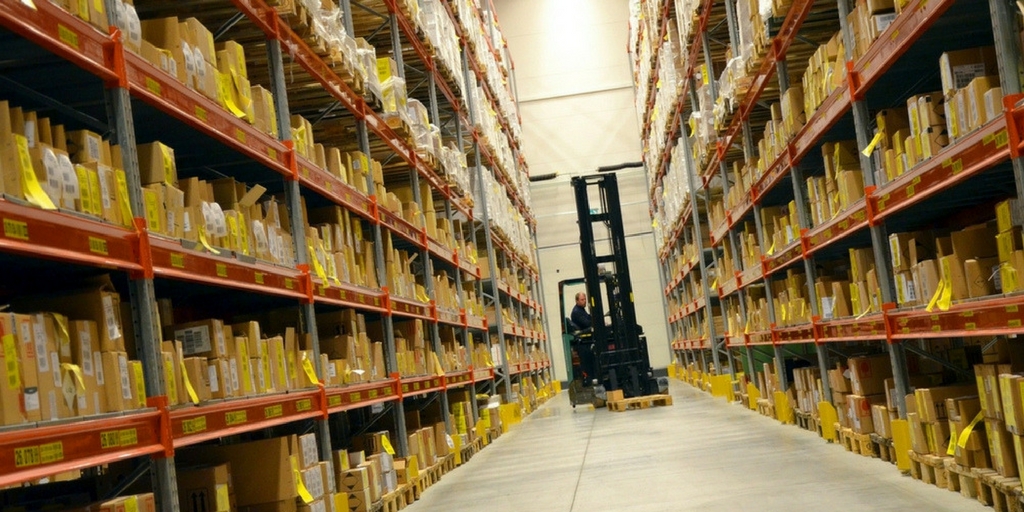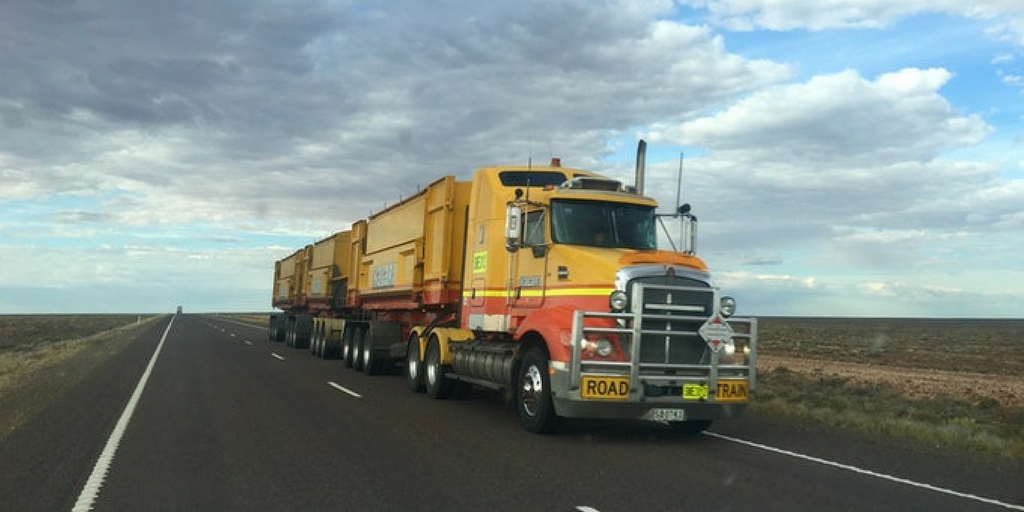
by Fronetics | Jan 9, 2018 | Blog, Current Events, Logistics, Marketing, Social Media, Supply Chain
Facebook is making lots of changes that will affect businesses’ organic reach. Here’s what you need to know and how it may impact your company.
In our most recent social media news post, we mentioned that Facebook was experimenting with an Explore Feed feature. You may or may not have heard about how this might affect businesses’ ability to achieve organic reach on Facebook.
The social media network claims it is trying to create the best user experience possible. But it might come at a high cost to businesses trying to reach new audiences. Could this be the end of organic reach for businesses on Facebook? Let’s take a look.
What is Facebook’s Explore Feed?
Explore Feed is a new tab on your Facebook homepage that will include recommended content that it thinks you might find interesting. This will include posts, articles, photos and videos from users and other Pages you don’t currently follow.
This separate news feed will only appear when you click on the Explore tab, leaving users’ homepage news feed to content from friends and Pages you already follow.
“We’ve heard from people that they want an easy way to explore relevant content from Pages they haven’t connected with yet,” says Facebook in a statement. “Businesses should be optimistic about the potential for users interested in content like theirs to find their pages through the new Explore Feed.”
What does this mean for your business?
In October, Facebook launched Explore Feed as an experiment in six countries — Sri Lanka, Bolivia, Slovakia, Serbia, Guatemala, and Cambodia. The results showed a massive decline in businesses’ organic reach. Most countries reported a drop of two-thirds within the first 48 hours after Explore launched.
A user’s feed will now only show their friends’ posts and paid posts and advertisements. This is a huge disadvantage for small businesses with limited budgets that have traditionally relied on the organic reach of their Facebook posts to help attract new audiences.
As Mashable says: “That means Facebook’s main feed is no longer a free playing field for publishers. Instead, it’s a battlefield of ‘pay to play’, where publishers have to pony up the dough to get back into the News Feed.”
What now?
Facebook insists these changes are in direct response to requests from users for an easier way to discover new Pages they aren’t already following. But it means a lot of changes for businesses running a Facebook business page. Companies need to ensure their content is high quality, unique and highly relevant. And more and more companies will have to start dipping into their budgets to boost posts and buy ads.
Important to note
Facebook is also tightening the reigns on Pages and individuals that use engagement bait to attract new followers. What is engagement bait?
“Engagement bait is a tactic to create Facebook posts that goad people into interacting through likes, shares, comments, and other actions in order to artificially boost engagement and get greater reach on News Feed,” says Facebook’s Newsfeed Guidelines. The social network’s new algorithm will demote any posts by individuals or Pages that promote their content through engagement bait.
Fronetics’ takeaway
Despite all of these new changes and their accompanying challenges, we’re not ready to write off Facebook for businesses just yet. The key will be for companies to continue to provide the best content possible through the social media platform to organically engage followers.
What do you think of Facebook’s new Explore Feed?
Related posts:


by Elizabeth Hines | Jan 4, 2018 | Blog, Current Events, Supply Chain, Transportation & Trucking
The FMCSA is not certifying ELD vendors’ products, which means carriers must ensure devices meet the organization’s technical specifications.
On December 18, new electronic logging device (ELD) regulations went into effect for commercial vehicle fleets across the U.S. The ELD mandate has caused major waves in the transportation industry. But it has the potential to rock supply chains and manufacturers around the globe — and not just because of anticipated transportation disruptions and increases in costs.
ELD manufacturers must comply with technical specifications outlined by the Federal Motor Carrier Safety Administration (FMCSA). They must also register their devices with the FMCSA. Motor carriers might assume that selecting a device that vendors are promoting as “FMCSA certified” would be a simple solution. Amazingly, however, that certification may not be worth the paper it’s printed on.
When does “certified” not mean “verified?”
Last year the FMCSA directed carriers to a site where they could find a list of registered ELDs. The problem with this is that the devices on this list are self-certified by the manufacturer. There’s no guarantee that they actually meet FMCSA guidelines.
To appear on the FMCSA’s list, ELD manufacturers must submit certain documents, including malfunction and diagnostics and product serial numbers. However, to gauge if their product is compliant, manufacturers must conduct their own tests. And the FMSCA is not vetting documentation of the testing.
The problem with this is fairly obvious. Without mandatory testing from a neutral, third-party source, devices are subject to only the rigor of their own manufacturer’s testing. They may not follow the FMCSA’s test specifications. And, of course, less-than-honorable manufacturers could use the lack of oversight to their advantage.
Consequences, however, will fall entirely on the shoulders of the operators and their carriers using non-compliant ELDs.
Compliant today, not tomorrow
Motor carriers purchase these systems under good faith that they will meet the FMCSA’s performance requirements once in use. But the possibility is looming that some ELDs may be noncompliant. Then what?
Carriers have eight days from the time an ELD is determined to be noncompliant to replace it with a compliant one. While drivers can temporarily use paper logs, this obviously isn’t a real solution, and will leave carriers scrambling to get their ducks in a row.
Due diligence
Before selecting an ELD vendor, carriers need to understand the details of compliance and hold vendors to those standards.
Carriers should push vendors for specific information about compliance with FMCSA test specifications. Or they should seek vendors who have opted to use third-party testing companies, such as PIT Group, to independently verify ELDs meet FMCSA standards. Either way, carriers should test and verify the ELDs they have chosen for their fleets on their own to ensure compliance as soon as possible.
The coming months are bound to see many headaches from the confusion caused by FMCSA-certified (but not regulated) ELD devices. Carriers need to be aware of this now, so they can properly prepare for any issues that may arise.
Related posts:

SaveSave

by Fronetics | Jan 2, 2018 | Blog, Content Marketing, Logistics, Marketing, Social Media, Supply Chain
It’s time to cast your vote for the top logistics and supply chain blogs of 2018!
We love hearing about your favorite logistics and supply chain blogs. We’re conducting our 4th annual survey to uncover the top industry blogs of 2018. Help us by voting for your favorite. Responses will be collected through Friday, January 26, 2018.

All responses are confidential and will be reported in aggregate. No identifiable information (individual or company) will be attached or included. Please contact [email protected] with any questions.
Interested in our past winners? Here they are!

SaveSave

by Fronetics | Dec 14, 2017 | Blog, Logistics, Supply Chain
Here are our most-viewed blog posts from 2017 about the supply chain and logistics industries, including posts about some of the largest supply chain companies in the world, Starbucks and Amazon.
Throughout the year, we write innovative posts to help readers stay in the know with the latest news and happenings to the supply chain & logistics industries. These posts provide insightful and relevant information from thought leaders, current trends, and tips to stay ahead of your competitors. Here’s a look at our most popular posts from this year.
Here are our top 10 supply chain and logistics posts of 2017.
1. Supply Chain Putting the ‘Star’ in Starbucks
Starbucks’ closely managed supply chain may be the key to the premium coffee giant’s success. The international coffee giant has widely studied and acclaimed supply chain management practices, which, according to some, make Starbucks’ coffee and customer experience superior to those of its competitors. Read more.
2. 8 Must-Follow Logistics & Supply Chain Blogs for 2017
Supply chain professionals should be following these eight blogs to keep up with the latest industry news and happenings in the coming year. They cover a range of topics, from technology to strategy, and feature thought leadership by some of the brightest minds in the field. Read more.
3. Top 5 Trends to Know to Compete with Amazon’s Supply Chain
Supply chains must accept that they cannot equal the power of Amazon’s supply chain without embracing new trends. While supply chain entities struggle to stay competitive with the e-commerce giant, more organizations will look for ways to eliminate inefficiencies and boost operations. Fortunately, these five trends may alleviate some of the strains of competition by giving supply chain partners an advantage in the global market. Read more.
4. 5 Podcasts for the Supply Chain and Logistics Professionals
These podcasts bring the latest news and thought leadership in the supply chain and logistics industries right to your earbuds. Podcast’s popularity has skyrocketed since the smartphone became as necessary as car keys, giving you to-the-minute facts and information, right in the palm of your hand. If you’re looking to increase your podcast listening, here are five that highlight topics of interest to supply chain and logistics professionals. Read more.
5. What’s the Difference between Supply Chain Management and Logistics (Infographic)
Argentus’ infographic sheds light on the differences between these often-confused functions. Both Logistics and the wider Supply Chain are vital to how companies run today, but the two are still so often confused. We put together an infographic outlining some of the key differences and points of overlap between them. Read more.
6. 5 Books Every Supply Chain Professional Should Read
Add these books to your reading list to stay on top of industry trends and jump start your professional development. Read more.
7. What are the Supply Chain Impacts of Amazon’s Whole Foods Acquisition?
Amazon’s foray into the grocery space has larger implications for its overall strategy, and the possible benefits for the eCommerce goliath are diverse. Big news out of the grocery retail world as Amazon has announced its acquisition of major organic foods retailer Whole Foods Market – for an eye-popping $13.7 billion sale price that doesn’t look so massive given Amazon’s $136 billion sales volume in 2016. Read more.
8. Packaging Trends to Watch in 2017
Will sustainability trends from the consumer packaging industry have an impact on electronics manufacturing this year? Packaging trends suggest a wide range of startups, researchers, and big companies are committed to finding solutions that match the buzzwords du jour — sustainable, bio-degradable, natural, and eco-friendly. Read more.
9. The Top 3 Logistics and Supply Chain Blogs for 2017 – Readers’ Choice!
Our readers voted Morai Logistics, Women in Trucking, and the Oracle Supply Chain Management Blog as the top 3 logistics and supply chain blogs of 2017. Every year we ask our readers to vote for the best industry blogs. The results are always interesting — there’s really a lot of great supply chain and logistics content out there, plus it’s great to see where our readers are finding value. Read more.
10. The State of Supply Chains: The Supply Chain Has Gone Digital (Infographic)
2016 was the year of the digital supply chain — here’s a look at how things changed. The digital transformation has already reached most supply chain organizations. Per GT Nexus, 75% of executives surveyed recognized the digital supply chain as an important factor for the next five years. Read more.
Related posts:


by Jennifer Hart Yim | Dec 7, 2017 | Blog, Logistics, Manufacturing & Distribution, Supply Chain
Within the month, the electronic logging device mandate will take effect. While shippers have known about the mandate for two years, truckers, shippers and carriers are still concerned about how it will impact capacity.
This post comes to us from Adam Robinson of Cerasis, a top freight logistics company and truckload freight broker.
Paired with soaring manufacturing and tightening capacity within the last month, the electronic logging device (ELD) mandate could cause the capacity crunch to worsen. In addition, other regulations, like changing attitudes and backlash at the environmental protection agency (EPA) and struggling infrastructure in Hurricane-affected areas, could cause further capacity problems. To help prevent the worsening of the capacity crunch, let’s take a closer look at how the ELD mandate and other regulations may affect capacity.
What Is the ELD Mandate?
The ELD mandate is a portion of the “Moving Ahead for Progress in the 21st Century” bill, which was passed by the United States Congress in 2012, explains ELDFacts.com. The bill outlines criteria for highway funding and the use of ELDs for use in a trucker’s Record of Duty Status. Today, the record of duty status is used to record compliance with an existing hours of service (HOS) requirements. Although the ELD mandate is a means to tracking HOS requirements, the two laws are completely different. As a result, but the ELD mandate and HOS regulations may have separate impacts on the capacity crunch.
When Does It Take Effect?
The ELD mandate is set to take effect December 18, 2017, and unfortunately, many owner-operator, truckers have not yet completed the installation of ELDs or found an appropriately authorized and licensed ELD vendor, says Jeff Berman of Supply Chain 24/7. However, the Federal Motor Carrier Safety Administration (FMCSA) will not begin requiring inspectors to place commercial motor vehicle drivers without and installed ELD out of service until April 1, 2018.
Even truckers with prior ELDs installed, which may have been installed before 2012, the upcoming ELD deadline has stringent requirements for what type of ELD may be used and who may install it. Truckers with existing ELDs from the pre-ELD mandate period will be automatically grandfathered into the existing list of ELDs at the end of 2019. Therefore, truckers looking to continue driving for the next two years need to have a new, approved ELD installed no later than the April deadline, if not the preferred December deadline. In the interim, politicians are still in debate about if the costs of installing new ELDs is justified under existing regulations, reports Supply Chain Dive. However, part of the reason the FMSCA has not yet rescinded or pushed back implementation revolves around HOS requirements.
What About HOS Regulations and the Capacity Crunch?
The capacity crunch revolves around how much available capacity is being used at any given time in the trucking industry. As a result, capacity is directly tied to the number of drivers which may be operating at any given time simultaneously. According to the FMCSA, the HOS rules are quite specific for property-carrying drivers. These include the following:
- Truckers have an 11-hour driving limit, and truckers may only drive a maximum of 11 hours after 10 consecutive hours off duty. Considering the amount of time required to park a truck, take breaks and other activities, it is nearly impossible for drivers to get in a full, 11 hours of daily driving while still obtaining the 10 required, consecutive hours off duty.
- Drivers now also have a 14-hour absolute driving limit for driving after coming on duty, following 10 consecutive hours of off-duty.
- Drivers must also take breaks and may only drive if eight hours or less have passed since the end of the drivers last off-duty.
- Perhaps the biggest impact for the HOS regulation is its specification of how many hours a driver may work within an eight-day period. If the driver drives for seven consecutive days, a trucker may not drive more than 60 hours on duty in the same period. Similarly, driver may not drive more than 70 hours with it in eight consecutive days. This consecutive. Can only restart after a driver takes 34 or more hours off duty.
Considering the HOS requirements, think about what this means for driver completing a two-way trip that requires 10 hours each way. The driver may now be limited to only making 14 total roundtrips within a seven-day period. Prior to the HOS requirement implementation, the same driver could have successfully completed an extra two trips by adding 2.5 hours to the daily driving schedule. Under the new HOS guidelines, the number of trips drivers may make is severely limited.
The Big Picture
The HOS requirements directly revolve around the ELD implementation and vice versa. The ELD will be used to track and monitor drivers existing adherence to HOS regulations, so regulations may adversely affect existing trucking capacity. Shippers need to consider how the ELD mandate and HOS regulations will result in a tightening of the existing capacity upon implementation, and even if the impact is not immediate, it will come to fruition within the next year. Shippers forgoing implementation of the ELD mandate within their fleets could face stiff penalties and other setbacks due to enforcement actions taken by the FMSCA.
Related posts:


by Fronetics | Dec 5, 2017 | Blog, Content Marketing, Current Events, Logistics, Marketing, Supply Chain
Companies in the supply chain and logistics industries should take note of these 4 trends that are gaining traction as we move into 2018.
Joe Pulizzi of the Content Marketing Institute recently revealed his predictions for the biggest trends in content marketing for 2018. As the founder of CMI, Pulizzi dedicates his time discussing how content marketing has evolved with leading marketers from around the world and keeps his finger on the pulse of content marketing trends.
Most of the predications we discussed for 2017 are still holding true as we roll into another calendar year. Supply chain and logistics companies are still working overtime to nail down a true content marketing strategy. Native advertising is still the “gateway drug” to content marketing. And the growing dependence on mobile devices has continued to skyrocket.
What does this mean for 2018?
The key trends from 2017 continue to highlight the importance of good content. With over one million new-data-producing social media users each day, high-quality content is the only way to stand out from the masses. As you start to strategize for next year, and beyond, be sure to consider these trends in your supply chain marketing plans.
4 content marketing trends for 2018
1. Original content is king
A recent report claims that Apple is planning to invest over $1 billion on original content. Why the hefty price tag? As competition in the mobile space continues to heat up, brands need to do more to stay relevant. Valuable, original content can help companies like Apple grow its audience and keep its current customers coming back for more.
What does this mean for you? Pulizzi believes that this trend will offer companies multiple options to monetize their content. Either through direct sales to customers or advertising and sponsorship opportunities, supply chain and logistics companies will be able to cash in on their original content.
Make sure to keep a close eye on your competitor’s content. More and more companies will see the value in original content and look to build loyalty and support from their growing audience.
2. Creating vs. purchasing
For those supply chain and logistics companies that don’t have the time or resources to invest in creating original content, acquisitions will offer a pricey solution. 2018 will see a spike in content marketing brand acquisitions, giving companies full-service content options. Back in August, Netflix acquired Millarworld, a comic book publisher, hoping to gain traction with cutting-edge content in a host of different mediums.
While 62% of companies outsource their content marketing, the rise in acquisitions highlights the value of content creation and distribution. The decision to create content vs. buy will depend on the size of your wallet.
3. Content marketing budgets on the rise
According to Marketingmag.com, content marketing will become a $300 billion industry by 2019. That’s a lot of money being spent on content creation and distribution, which can only mean one thing: content marketing budgets are increasing. 39% of marketers expect their content marketing budgets to increase this year.
More brands are seeing the effectiveness of content marketing over traditional advertising. Moving away from traditional advertising and optimizing your content marketing strategy will make your marketing budget dollars stretch further and work harder in getting your content in front of the right people.
4. Content marketing overlap
Many of us are familiar with Marcus Sheridan’s story about the success of his pool company and starting the Sales Lion. Desperate to save his company, Sheridan threw himself into content marketing and created the most-visited swimming pool website in the world. Sheridan’s biggest take away? Marketing is a team sport. “Want content marketing to work? Involve everybody on your teams,” writes Sheridan.
Content marketing doesn’t work in a silo and without leadership. For content marketing to be most effective, leaders need to give clear ownership to someone over your content marketing strategy. From there, everyone needs to get on board, creating a culture of content. Your sales teams should integrate your content marketing into their sales processes. Your PR team should meet regularly with your social media experts.
“To say you have a culture of content is to say that everyone who works for your company understands the value of the information you provide and participates in making that information useful,” writes Marcia Reifer Johnston.
Overlap is bound to happen in your content marketing endeavors. The key is to have clear leadership over your strategy and regularly communicate your goals and initiatives, so your entire team can be engaged in your efforts.
Related posts:










